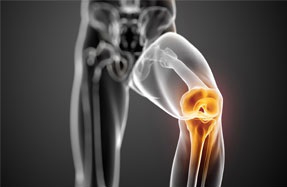Knee pain is incredibly common. In the United States, it’s responsible for about 1/3 of all doctor’s visits for muscle and bone pain. Knee pain is a special problem for athletes — over half of all athletes endure it every year.
Some of the most common reasons for knee pain are swollen or torn ligaments, meniscus (cartilage) tears, and runner’s knee. But the knee is a complex joint, and there’s plenty more that can go wrong.
Other conditions that cause knee pain include:
BONE CHIPS. Sometimes, a knee injury can break off fragments from the bone or cartilage. These pieces can get stuck in the joint, causing it to freeze up. You may also have pain and swelling.
BURSITIS. A bursa is a sac of fluid that cushions and protects your joints. There are several in different parts of your knee. Overuse, a fall, or repeated bending can irritate the bursa, causing pain and swelling. Two types of bursitis are called ”housemaid’s knee” and ”preacher’s knee,” since they are often caused by kneeling. A ”Baker’s cyst” — a swelling of one of the bursa in the back of the knee — can also result from injuries and from conditions like arthritis.
LLIOTIBIAL BAND SYNDROME. The iliotibial band is a piece of tough tissue that runs from your hip down to your shin. If it’s irritated by overuse or other problems, it can get swollen and cause pain on the outer side of the knee.
OSTEOARTHRITIS. This condition is a frequent cause of knee pain in athletes and non-athletes alike who are over 60.
Partially dislocated kneecap (or patellar subluxation). In this condition, the kneecap slides out of position, causing knee pain and swelling. It’s often the result of physical defect in your legs, rather than an injury. It’s particularly common in teenage girls.
TENDONITIS, or swelling of the tendons. Tendons are tough bands of tissue that connect your bones and muscles. Overuse can make the tendons inflamed and sore. One type of knee tendonitis is called ”jumper’s knee.”
If an old knee injury was not properly treated, it may keep causing occasional — or constant — knee pain.


